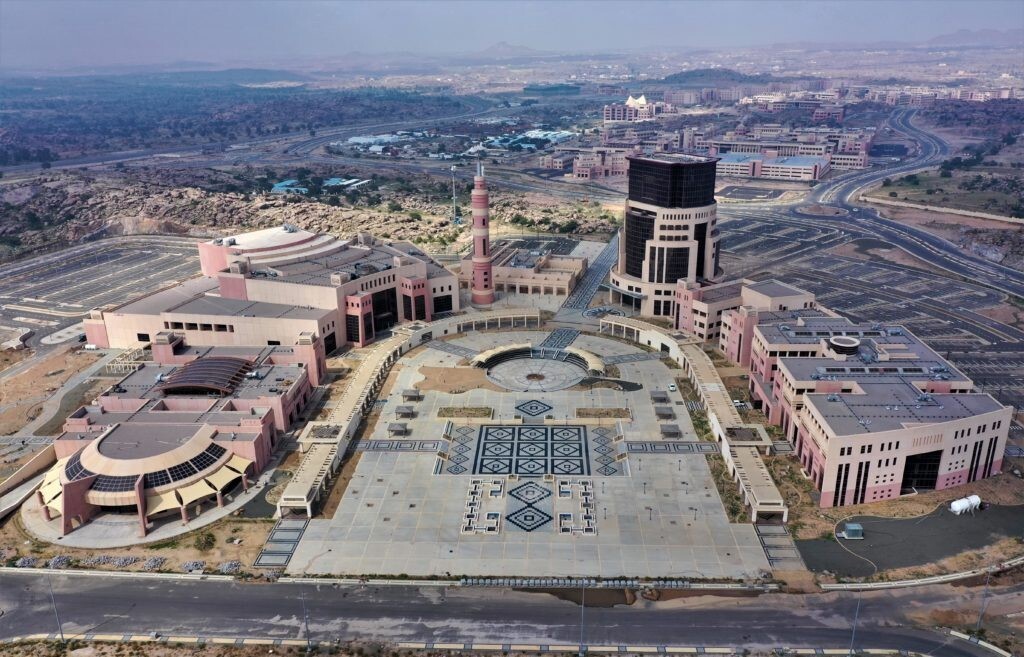

Saudi Arabia’s King Khalid University researchers have designed an anti-reflective coversheet filament that can be used by a 3D printer for photovoltaic (PV) modules. The cover sheet is entrenched on cyclic-olefin copolymers (COC), with added aluminium oxide (Al2O3) or better known as alumina powder, at different concentrations. COC are polymers with unique mechanical traits and transparency, while aluminium oxide is known for its enhanced anti-reflection attributes.
 Image Source: King Khalid University
Image Source: King Khalid University
“The application of anti-reflective materials on the photovoltaic substrates can enhance the absorption of sunlight and minimise the reflection,” explained the researchers. “Currently, there is no ideal anti-reflective coating for solar cells that can transmit sunlight without reflection.”
In recent years, there has been a noticeable hype about using solar cells to produce electrical power to fulfil the ever-increasing global energy demands. An optical loss (the decrease in the power of optical signals transmitted through a fibre — as defined by Science Direct) is a vital aspect that impacts the enactment of the photovoltaic conversion method.
“Fused deposition modelling (FDM) is an additive manufacturing method that works on the principle of extrusion. A 3D coversheet design is created by a standard computer-aided design (CAD) software,” the team clarified. “The specimens are produced by utilising a nozzle having a diameter of 0.4 mm. The bed temperature is maintained at 60 C, the layer thickness is set at 0.2 mm, the raster angle is set at 45, and the infill pattern is linear without support.”
This loss ensues when incoming sunlight is bounced back on the outer layer of the photovoltaic cells. Applying an anti-reflective substance on the photovoltaic substrates can enhance the absorption of sunlight and minimise the reflection. Currently, there is no ideal anti-reflective coating for solar cells that can transmit sunlight without reflection.
In this research, a diaphanous cyclic-olefin-copolymer (COC) was used to forge an anti-reflection (AR) coversheet by fused deposition modelling process (3D printing). Further, the aluminium oxide Al2O3 powder was appended at 1 per cent, 2 per cent, 3 per cent, and 4 per cent of the cumulative weight to the COC polymer to boost the anti-reflection attributes.
The structural, morphological, mechanical (tear strength), electrical and temperature characteristics were studied. The performance of COC with aluminium oxide (COCA) coversheets was evaluated, and the findings revealed a considerable increment in power conversion efficiency (PCE) of 17.21 per cent (sunlight exposure) and 18.34 per cent (neodymium light) for COCA3 coversheets. The COCA3 sample exhibits lower electrical resistance of 3.88 × 10−3 Ω cm, carrier concentration (36.91 × 1020 cm−3) and higher hall mobility (13.67 cm2/Vs). The investigation findings demonstrated that using COC with Al2O3 powder (COCA) can be a suitable anti-reflective coversheet material for boosting the performance of polycrystalline silicon photovoltaic cells.
The group concluded. “With the addition of alumina at a concentration of 4 per cent of the total weight, both the open-circuit voltage and short-circuit current are reduced, which leads to a reduction in efficiency of the photovoltaic cell for up to 25 per cent.”
Aluminium oxide, a key component of the anti-reflective coversheet, finds wide applications in various industries. From medical-electrical-gem-automotive to protective equipment such as body and vehicle armor, its versatility is well-established. It is also used in the production of synthetic-sapphire bulletproof ballistics and windows, further highlighting its practicality.
Aluminum oxide is important to produce aluminium metal, as an abrasive owing to its hardness, and as a refractory material owing to its high melting point.
As per International Aluminium Institute, annual world production of alumina / aluminium oxide is 143,313 thousand tonnes in 2023, over 90 per cent of which is used in the production of aluminium metal. Some of the significant uses of speciality aluminium oxides are in polishing, refractories, abrasive, and ceramics applications. Large quantity of aluminium hydroxide, from which alumina is derived, are used in the production of zeolites, coating titania pigments, and as a fire retardant/smoke suppressant.
Responses








